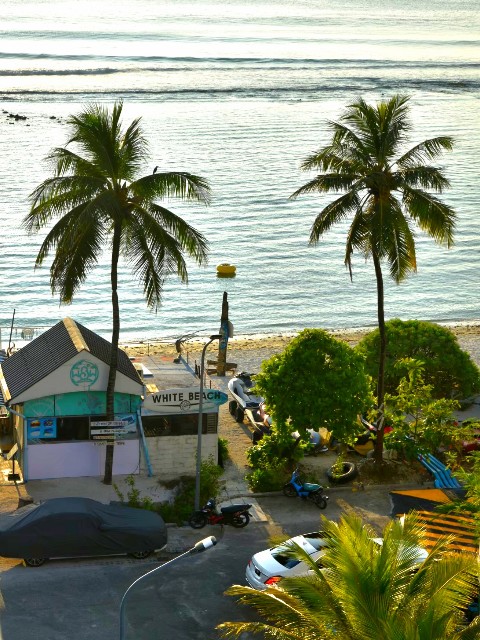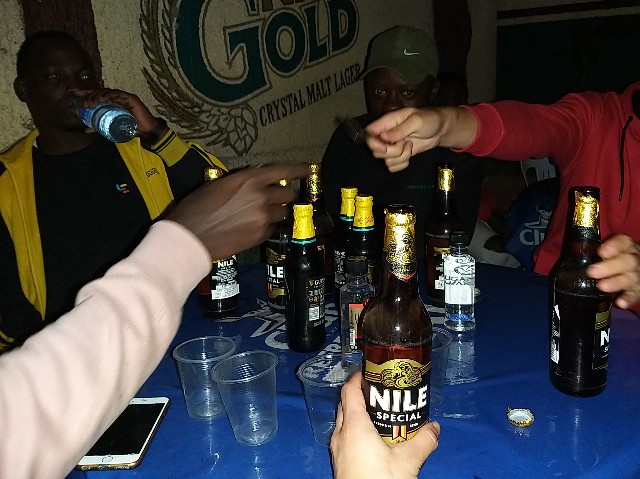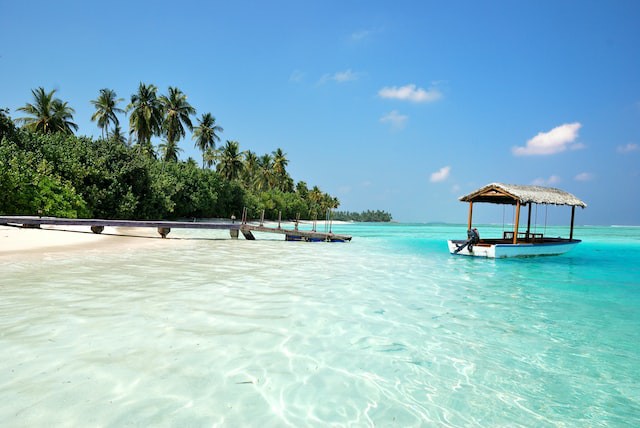
In the first part, we introduced “Ruku Raa,” a traditional Maldivian drink reputed to be somewhat “alcohol-like”. In this second part, we’ll explain its fresh flavor, its state after a few days, and precautions for handling it.
Read the first part here
Premise: Freshness is Crucial for Ruku Raa
As mentioned in the first part, freshness is crucial for Ruku Raa. This is because natural fermentation begins from the moment it’s collected, and within a few hours, its taste can change completely. Apparently, the principle is that it ferments by reacting with airborne yeast and other microorganisms. As a result, its acidity increases over time, giving it a vinegar-like flavor, and in some cases, it may even produce alcohol, turning into an alcoholic beverage. This is why it’s described as an “alcohol-like” drink.
To reiterate, alcohol consumption is prohibited on local islands in the Maldives. If Ruku Raa turns into alcohol, it needs to be disposed of promptly. For this coverage, we brought an alcohol content meter to thoroughly verify and taste test.
Day 1: Rejoicing in a Taste Completely Different from Coconut Water

Now, let’s taste this Ruku Raa. The freshly collected Ruku Raa was delivered to our lodging by a specialist. It’s slightly whitish and translucent, with a thin layer of foam on top. Perhaps this is evidence that natural fermentation has already begun.

And the crucial taste. After taking a sip, we were at a loss for words. This was because it had such an exotic flavor that we had never tasted before, making it difficult to compare to anything else. If we had to describe it, it might be called a new type of fruit juice. It’s closer to lychee juice than coconut water or coconut milk. Yet, it has a slight carbonation like nigori sake (cloudy sake) or Lambrusco. There’s a hint of sweetness and sourness, along with a slight coconut-like aroma. It’s a flavor that seems to condense the essence of the tropics.
I was taken aback, having imagined a sweet flavor like Malibu or other coconut liqueurs. It’s a fresher and more invigorating taste than I expected. On this day, Ruku Raa accompanied our dinner, quenching our thirst while we enjoyed its flavor.
Day 2: Ruku Raa with Increased Sweetness and White Sediment

Having received a large quantity of Ruku Raa, we decided to store the remainder in the refrigerator. The next evening, when we took out the chilled Ruku Raa, there was a clear visual change. The previously uniform, translucent Ruku Raa had undergone some kind of separation, with white sediment appearing in the bottle. After confirming with locals that there was no issue with quality, we gently shook the bottle and decided to check today’s Ruku Raa flavor.
Surprisingly, it’s become significantly sweeter than yesterday. This is a clear change in flavor, not just a “concentration due to water evaporation”. Is this the power of natural fermentation? The carbonation has also increased, giving an even more fizzy sensation on the tongue than yesterday. While Ruku Raa is known for its freshness, some locals apparently prefer this “somewhat naturally fermented” state with its richer taste. Perhaps the idea that “things taste better when fermented or aged to some extent”, like with Tofuyo (fermented tofu) or Mimolette cheese, is a universal niche gourmet culture.
Day 3: Ruku Raa Transformed into a Full-Fledged Carbonated Drink

And on the third day. We had stored the remaining Ruku Raa in the refrigerator as before, but it had undergone further changes. There was an extraordinary amount of foam accumulated in the bottle. Feeling a sense of danger but cautiously trying to open the bottle cap, it flew off with intense force like a champagne bottle. It could have been dangerous if it had hit our eyes.

When poured into a glass, bubbles characteristic of carbonated drinks appear on the surface. We were certain before drinking that Ruku Raa had turned into a carbonated drink, but when we actually tasted it, the carbonation punch was beyond imagination. It’s no exaggeration to say that it has as much or more carbonation as cola or Sprite. It’s a level of strong carbonation that people who dislike carbonated drinks absolutely couldn’t handle. We underestimated the power of natural fermentation.
Not only the carbonation, but the sweetness and sourness seem to have intensified as well, making each sip feel heavy. It’s a heavy taste that you might believe if someone told you it was alcohol.
Day 4: Ruku Raa Transformed into Micho (Beauty Vinegar)
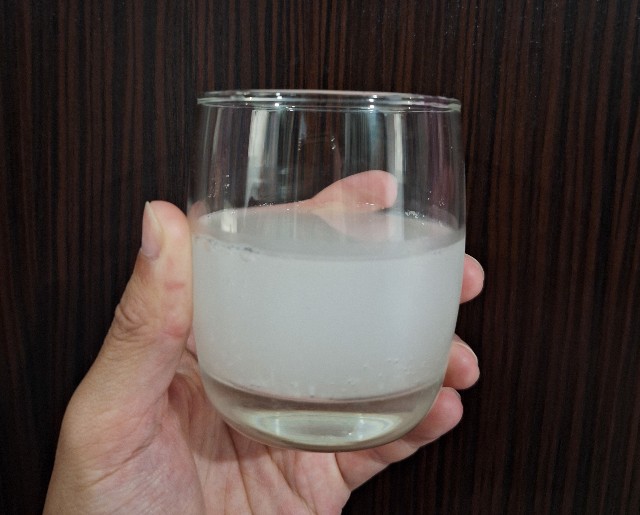
And on the fourth day. Ruku Raa has finally entered its final form. The color has become whiter compared to the first day, turning into a milky white color like Makgeolli. Additionally, the balance of sweetness and sourness that had been gradually increasing has collapsed, with sourness suddenly increasing at this point. It’s now closer to a sweetened vinegar than a juice. It’s similar to Korean Micho (beauty vinegar) in sensation.
While it has become lighter on the palate as some of the carbonation has dissipated, the intense punch of acidity hits the tongue. Apparently, even locals don’t particularly enjoy drinking Ruku Raa in this vinegar state, although it might be used as a seasoning in cooking. This is the end, Ruku Raa. Thank you for showing us such bold transformations like Frieza-sama. The last cup left in the bottle soothed our bodies, tired from the strong Maldivian sun, like Micho.
How was it?
Over two parts, we’ve explained about the unique Maldivian drink “Ruku Raa”. Ruku Raa is a drink full of charm and fascination that rapidly changes its taste through the power of natural fermentation. If you want to have a deep and local experience in the Maldives, please try to obtain it locally and savor its taste.
Read the first part here
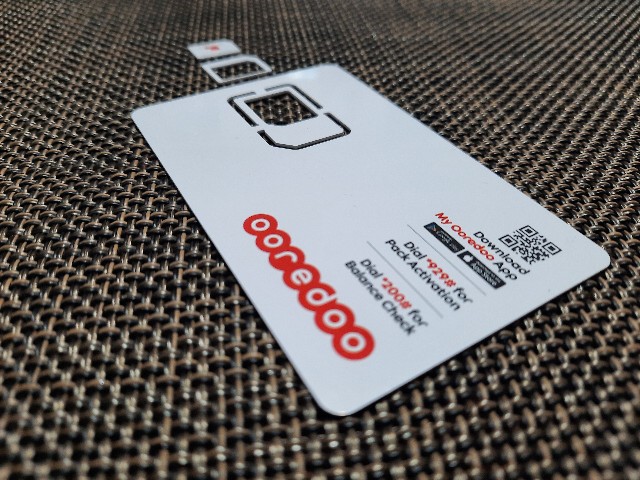
![[Maldives Local Islands] 3 Local Islands You Can Visit Without a Prior Reservation [2025 Edition]](https://en.kosupatravel.com/wp-content/uploads/2025/03/20240629143118.jpg)

